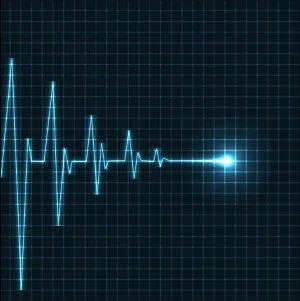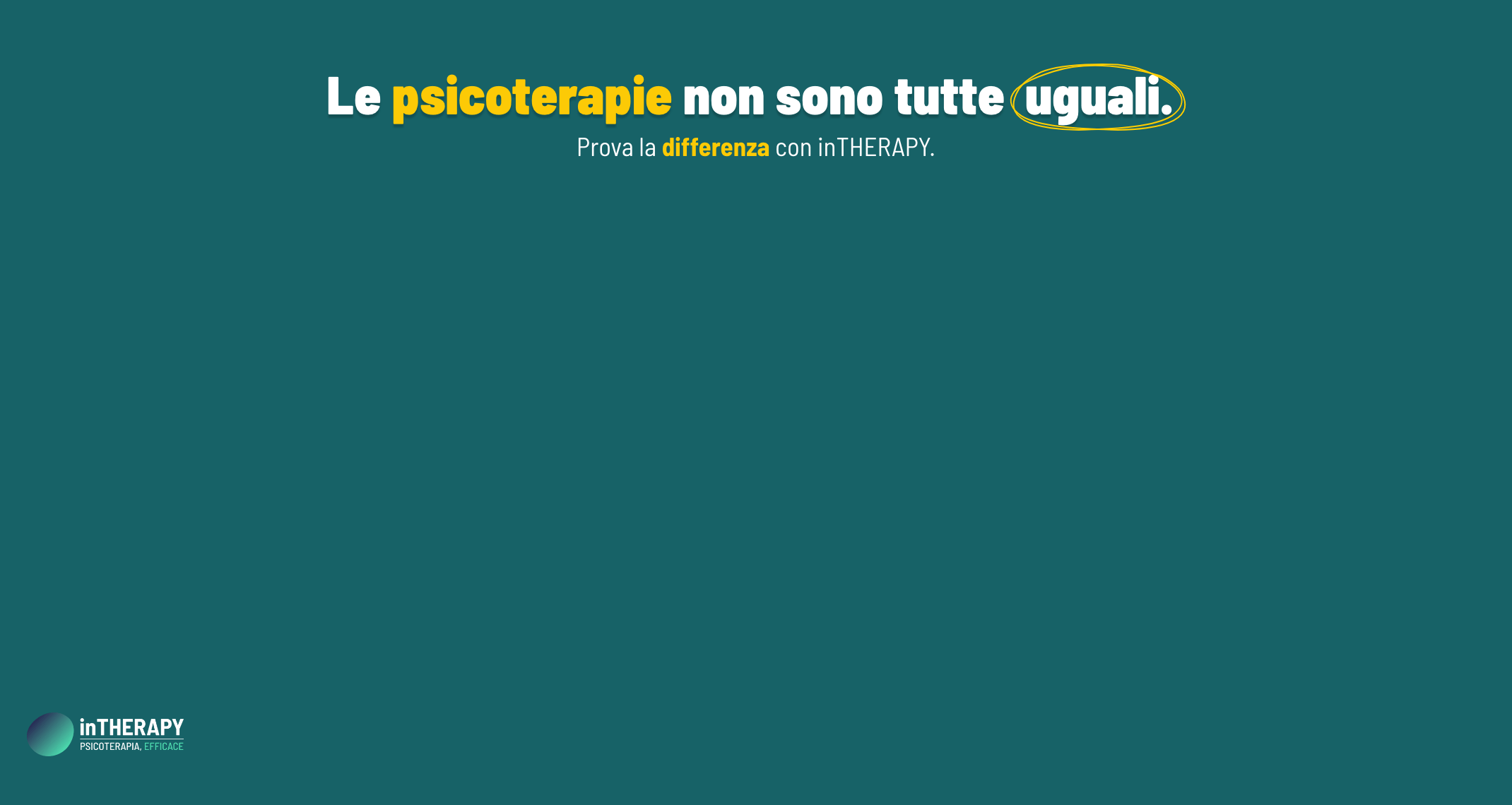
D’altro canto anche sopravvivere ad eventi cardiaci gravi (infarto del miocardio, arresto cardiaco, chirurgia cardiaca, trapianti) influenza fortemente il benessere psicologico e le condizioni di salute delle persone che ne sono vittime (Razzini C, et al., 2008, Kubzansky LD, et al. 2006; Shemesh, E. et al., 2004;).
Dopo un evento cardiaco grave, si può andare incontro a stati di ansia e depressione (Berkman; Davidson, et al. 2010) e sviluppare addirittura i sintomi tipici di un disturbo post traumatico da stress (PTSD) (Mavros, N., et al., 2011): secondo i dati in letteratura va incontro a un PTSD il 19%-38% dei pazienti che hanno avuto un arresto cardiaco (Gamper et al., 2004; Ladwig et al., 1999; O’Reilly, Grubb, & O’Carroll, 2004), il 16%-22% di quelli che hanno avuto un infarto del miocardio (Ginzburg, et al., 2006; Pedersen, Middel, & Larsen, 2003; Shemesh et al., 2006), 8%-18% dei pazienti sottoposti a chirurgia cardiaca (Connolly, et al. 2004; Doerfler, Pbert, & DeCosimo, 1994; Schelling et al., 2003) e 11% -16% dei pazienti che hanno subito un trapianto (Dew et al., 1996, 1999, 2000, 2001).

Non intervenire adeguatamente su questi aspetti psicologici ed emotivi può compromettere le possibilità di recupero sia psicologico che fisico del paziente (Shemesh, E. et al.,2004, Frasure-Smith N, Lespérance F., 2008), peggiorando anche la compliance con il personale medico. La ricerca in questo campo (Davidson, et al. 2010) dimostra che uno stato depressivo minore dopo un infarto del miocardio può aumentare significativamente le probabilità di mortalità negli anni successivi. Secondo i dati presentati all’12th Annual Spring Meeting on Cardiovascular Nursing (Damen et al. 2012), che si è tenuto a Marzo 2012 a Copenhagen, in un campione di più di 1000 pazienti che hanno subito interventi alle coronarie il 26,3% va incontro a depressione, e nei 7 anni successivi è stata registrata una mortalità del 23,5% tra i pazienti depressi contro il 12,2% tra i pazienti non depressi; la depressione inoltre è risultata indipendentemente associata a tutte le cause di mortalità.
Anche i sintomi di un PTSD hanno effetti a lungo termine nell’aumentare il rischio di mortalità, sia in pazienti a cui siano stati impiantati defribillatori (Ladwig KH, et al., 2008; Davidson, et al. 2010) sia in pazienti che hanno subito trapianti (Ladwig KH, et al. 2008), aumentando anche il rischio di problemi cardiovascolari correlati (Shemesh, E. et al.,2004).
I dati di ricerca (Denollet, J. Et al., 2010; Razzini C, et al., 2008; Petersen e Denollet, 2003) suggeriscono inoltre che pazienti cardiopatici con una personalità di tipo D – caratterizzata da negatività, pessimismo e inibizione sociale – hanno tre volte il rischio, rispetto agli altri pazienti cardiopatici, di sviluppare ulteriori problemi cardiaci in futuro. Tale tipo di personalità è pertanto associato a una prognosi cardiaca negativa. Il trattamento del disagio psicologico, oltre che indurre una riduzione dei sintomi depressivi, sembra migliorare gli esiti fisici di questi pazienti.
Di fronte di questi dati un intervento psicologico-psicoterapeutico appare molto indicato e può attuarsi a diversi livelli:
Relazionale:
- Stabilire una comunicazione efficace tra il paziente ed i familiari
- Facilitare la collaborazione tra il paziente e la sua famiglia, e gli operatori sanitari
Diagnostico:
Attraverso la somministrazione di alcune scale per valutare, e monitorare nel tempo, la severità di sintomi ansiosi e depressivi e l’intensità delle reazioni di evitamento, intrusività e iperarousal:
- CES-D (Radloff, L., S., 1977), è una scala validata per misurare la depressione negli adulti, nel caso di pazienti anziani si usa la GDS (Yesavage, J., A.; Brink, T., L.; Rose T., L. et al., 1983) ;
- STAI è una scala che permette di misurare sia l’ansia di stato che quella di tratto (Spielberger, Gorsuch, Lushene, 1968)
- la IES-R (Weiss & Marmar, 1997), è uno strumento usato per monitorare l’intensità delle reazioni di evitamento, intrusività e iperarausal a seguito di eventi traumatici;
Terapeutico, riabilitativo, preventivo:
- Lavorare sui sintomi ansiosi e depressivi e sulla reazione allo stress traumatico.
- EMDR in pazienti sopravvissuti a eventi cardiaci gravi

Sono già stati condotti due studi sperimentali in pazienti sopravvissuti ad eventi cardiaci gravi per testare l’efficacia del metodo nel trattare i sintomi di PTDS, ansia e depressione che si sono sviluppati nel periodo post operatorio. In entrambi gli studi (Arabia, E; Manca, M L; Solomon, R M. 2011; Shemesh et al., 2010) il trattamento (in media 10 sedute) si è dimostrato efficace nella riduzione della sintomatologia postraumatica, nel ridurre sia l’ansia di stato che quella di tratto e nel ridurre la sintomatologia depressiva; inoltre questo tipo di trattamento si è dimostrato superiore ad altre tecniche di trattamento usate, ad esempio le tecniche immaginative.
Il follow up a 6 mesi ha dimostrato il persistere dei benefici anche a lungo termine. Questi risultati replicano quelli di ricerche precedenti sull’efficacia dell’EMDR nel trattamento di sintomi ansiosi e depressivi (Raboni, Tufik, & Suchecki, 2006; Scheck, Schaeffer, & Gillette, 1998; Ironson, Freund, Strauss, & Williams, 2002; Marcus, Marquis, & Sakai, 1997; van der Kolk et al., 2007)
BIBLIOGRAFIA:
1. Arabia, E; Manca, M L; Solomon, R M. (2011), EMDR for Survivors of Life-Threatening Cardiac Events: Results of a Pilot Study, Journal of EMDR Practice and Research, Volume 5, Number 1, 2011 , pp. 2-13(12)
2. Berkman, L. F., Blumenthal, J., Burg, M., Carney, R. M., Ca- tellier, D., Cowan, M. J., et al. (2003). Effects of treating depression and low perceived social support on clinical events after myocardial infarction: The Enhancing Re- covery in Coronary Heart Disease patients (ENRICHD) randomized trial. Journal of the American Medical Associa- tion, 289(23), 3106–3116.
3. Connolly, D., McClowry, S., Hayman, L., Mahony, L., & Artman, M. (2004). Posttraumatic stress disorder in chil- dren after cardiac surgery. Journal of Pediatrics, 144(4), 480–484.
4. N L M Damen, H Versteeg, E Boersma, RM Van Geuns, RT Van Domburg, SS Pedersen, Depression is independently associated with 7-year mortality in patients treated with percutaneous coronary intervention: results from the reseach registry. European Journal of Cardiovascular Nursing ( 2012 )
5. Davidson, K.W., Rieckmann, N., Clemow, L., Schwartz, J.E., Shimbo, D., Medina, V., & et al. (2010). “Enhanced depression care for patients with acute coronary syndrome and persistent depressive symptoms: Coronary psychosocial evaluation studies randomized controlled trial.” Archives of Internal Medicine, 170 (7): 600-608.
6. Dew, M. A., DiMartini, A. F., Switzer, G. E., Kormos, R. L., Schulberg, H. C., Roth, L. H., et al. (2000). Patterns and predictors of risk for depressive and anxiety-related disorders during the first three years after heart trans- plantation. Psychosomatics, 41(2),191–192.
7. Dew, M. A., Kormos, R. L., DiMartini, A. F., Switzer, G. E., Schulberg, H. C., Roth, L. H., et al. (2001). Prevalence and risk of depression and anxiety-related disorders dur- ing the first three years after heart transplantation. Psy- chosomatics, 42(4), 300–313.
8. Dew, M. A., Kormos, R. L., Roth, L. H., Murali, S., DiMartini, A., & Griffith, B. P. (1999). Early post-transplant medical compliance and mental health predict physical morbidity and mortality one to three years after heart transplan- tation. Journal of Heart and Lung Transplantation, 18(6), 549–562.
9. Dew, M. A., Roth, L. H., Schulberg, H. C., Simmons, R. G., Kormos, R. L., Trzepacz, P. T., & Griffith, B. P. (1996). Prevalence and predictors of depression and anxiety- related disorders during the year after heart transplanta- tion. General Hospital Psychiatry, 18(Suppl. 6), 48S–61S.
10. Doerfler, L. A., Pbert, L., & DeCosimo, D. (1994). Symp- toms of posttraumatic stress disorder following myo- cardial infarction and coronary artery bypass surgery. General Hospital Psychiatry, 16(3), 193–199.
11. Frasure-Smith N, Lespérance F. (2008) Depression and anxiety as predictors of 2-year cardiac events in patients with stable coronary artery disease. Arch Gen Psychiatry.; 65:62–71.
12. Gamper, G., Willeit, M., Sterz, F., Herkner, H., Zoufaly, A., Hornik, K., et al. (2004). Life after death: Posttraumatic stress disorder in survivors of cardiac arrest—prevalence, associated factors, and the influence of sedation and an- algesia. Critical Care Medicine, 32(2), 378–383.
13. Ginzburg, K., Solomon, Z., Dekel, R., & Bleich, A. (2006). Longitudinal study of acute stress disorder, posttrau- matic stress disorder and dissociation following myo- cardial infarction. Journal of Nervous and Mental Disorders, 194(12), 945–950.
14. Hemingway, H., Kuper, H. (1990) Biologica dimensions of personality. In L.A. Pervin (eds), Hanbook of personality: theory and research (pp. 244-270). New York: Guilford
15. Johan Denollet, J., Schiffer, A.A., & Spek, V. (2010). “A General Propensity to Psychological Distress Affects Cardiovascular Outcomes: Evidence From Research on the Type D (Distressed) Personality Profile.” Circulation: Cardiovascular Quality and Outcomes, 3: 546-557.
16. Kubzansky LD, Cole SR, Kawachi I, Vokonas P, Sparrow D. (2006) Shared and unique contributions of anger, anxiety, and depression to coronary heart disease: a prospective study in the Normative Aging Study. Ann Behav Med.;31:21–29.
17. Ironson, G. I., Freund, B., Strauss, J. L., & Williams, J. (2002). Comparison of two treatments for traumatic stress: A community-based study of EMDR and prolonged exposure. Journal of Clinical Psychology, 58(1), 113–128.
18. Ladwig KH, Baumert J, Marten-Mittag B, Kolb C, Zrenner B, Schmitt C. (2008) Posttraumatic stress symptoms and predicted mortality in patients with implantable cardioverter-defibrillators: results from the prospective living with an implanted cardioverter-defibrillator study. Arch Gen Psychiatry.;65:1324–1330.
19. Ladwig, K. H., Schoefinius, A., Dammann, G., Danner, R., Gürtler, R., & Herrmann, R. (1999). Long-acting psy- chotraumatic properties of a cardiac arrest experience. American Journal of Psychiatry, 156(6), 912–919.
20. Marcus, S., Marquis, P., & Sakai, C. (1997). Controlled study of treatment of PTSD using EMDR in an HMO setting. Psychotherapy, 34, 307–315.
21. Mavros, N., M.; Athanasiou, S.; Gkegkes, I. D. ; Polyzos, K. A.; Peppas, Ge.; Falagas, M. E.; Scott, .J G., (2011) Do Psychological Variables Affect Early Surgical Recovery? PLoS ONE, Vol. 6, No. 5. (25 May 2011), e20306.
22. O’Reilly, S. M., Grubb, N., & O’Carroll, R. E. (2004). Long- term emotional consequences of in-hospital cardiac ar- rest and myocardial infarction. British Journal of Clinical Psychology, 43(Pt. 1), 83–95.
23. Pedersen, S. S., Denollet, J. (2003) Type D personality, cardiac events, and impaired quality of life: a review. European journal of Cardiovascular Prevention and Rehabilitation, 10, 241-248
24. Pedersen, S. S., Middel, B., & Larsen, M. L. (2003). Post- traumatic stress disorder in first-time myocardial infarc- tion patients. Heart & Lung, 32(5), 300–307.
25. Raboni, M. R., Tufik, S., & Suchecki, D. (2006). Treat- ment of PTSD by eye movement desensitization and reprocessing improves sleep quality, quality of life and perception of stress. Annals of the New York Academy of Science, 1071, 508–513.
26. Radloff, L., S. (1977) The CES-D: a self-report depression scale for research in the general population. Appl Psychol Meas; 1 (3): 385-401
27. Razzini C, Bianchi F, Leo R, Fortuna E, Siracusano A, Romeo F. (2008) Correlations between personality factors and coronary artery disease: from Type A behaviour pattern to Type D personality. J Cardiovasc Med.;9:761–768.
28. Roest AM, Martens EJ, de Jonge P, Denollet J. (2010) Anxiety and risk of incident coronary heart disease: a meta-analysis. J Am Coll Cardiol.;56:38–46
29. Scheck, M. M., Schaeffer, J. A., & Gillette, C. (1998). Brief psychological intervention with traumatized young women: The efficacy of eye movement desensitization and repro- cessing. Journal of Traumatic Stress, 11(1), 25–44.
30. Schelling, G., Richter, M., Roozendaal, B., Rothenhäusler, H. B., Krauseneck, T., Stoll, C., et al. (2003). Exposure to high stress in the intensive care unit may have negative effects on health-related quality-of-life outcomes after cardiac surgery. Critical Care Medicine, 31(7), 1971–1980.
31. Shemesh, E., Yehuda, R., Milo, O., Dinur, I., Rudnick, A., Vered, Z., et al. (2004). Posttraumatic stress, nonadherence, and adverse outcome in survivors of a myocardial infarction. Psychosomatic Medicine, 66(4), 521–526.
32. Shemesh, E., Koren-Michowitz, M., Yehuda, R., Milo-Cotter, O., Murdock, E., Vered, Z., et al. (2006). Symptoms of posttraumatic stress disorder in patients who have had a myocardial infarction. Psychosomatics, 47(3), 231–239.
33. Shen BJ, Avivi YE, Todaro JF, Spiro A III., Laurenceau JP, Ward KD, Niaura R. (2008) Anxiety characteristics independently and prospectively predict myocardial infarction in men: the unique contribution of anxiety among psychologic factors. J Am Coll Cardiol.;51:113–119.
34. Spielberger, C. D. (1983). Manual for the state-trait anxiety inven- tory (STAI). Palo Alto, CA: Consulting Psychologists Press.
35. Spindler, H., & Pedersen, S. S. (2005). Posttraumatic stress disorder in the wake of heart disease: Prevalence, risk factors, and future research directions. Psychosomatic Medicine, 67(5), 715–723.
36. Thombs, B. D., de Jonge, P., Coyne, J. C., Whooley, M. A., Frasure-Smith, N., Mitchell, A. J., et al. (2008). Depression screening and patient outcomes in cardio- vascular care: A systematic review. Journal of the Ameri-can Medical Association, 300(18), 2161–2171.
37. Yesavage, J., A.; Brink, T., L.; Rose T., L. et al (1983) Development and validation of a geriatric depression screening scale: a preliminary report. J Psychiatr Res; 17: 37-49
38. van der Kolk, B. A., Spinazzola, J., Blaustein, M. E., Hopper, J. W., Hopper, E. K., Korn, D. L., et al. (2007). A random- ized clinical trial of eye movement desensitization and reprocessing (EMDR), fluoxetine, and pill placebo in the treatment of posttraumatic stress disorder: Treatment effects and long-term maintenance. Journal of Clinical Psychiatry, 68(1), 37–46.
39. Weiss, D., & Marmar, C. R. (1997). The Impact of Event Scale–Revised. In J. P. Wilson & T. M. Keane (Eds.), As- sessing psychological trauma and PTSD (pp. 168–189). New York: Guilford Press.


